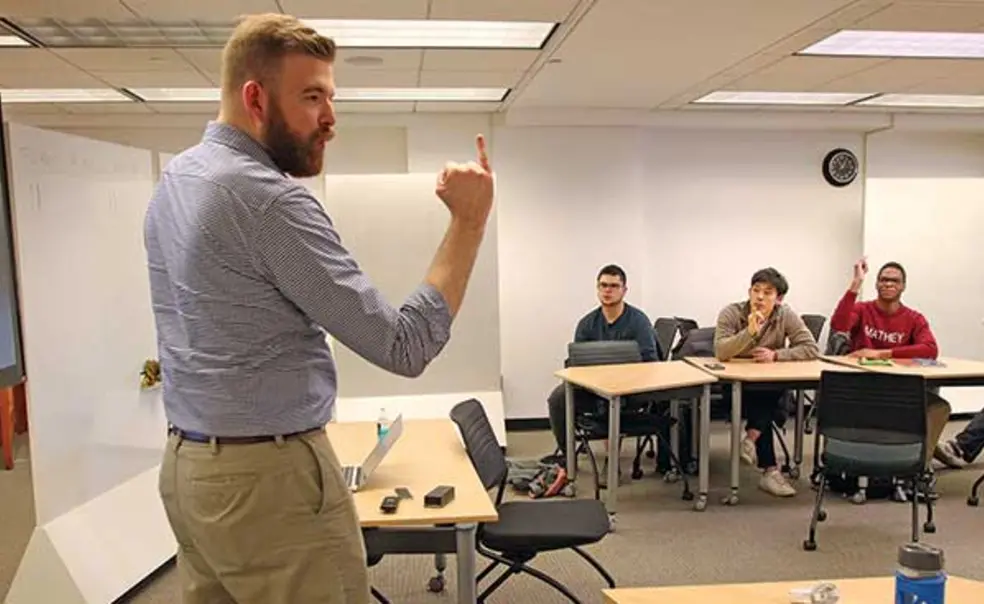Delivering a weather report and portraying a doctor and a patient during a medical checkup are not your typical classroom activities. But role-playing — along with an occasional game of hide and seek — is helping to bring American Sign Language (ASL) to life for Princeton students.
“The dynamic is really cool, you can’t compare it to any other course here at Princeton,” said Larissa Oliveira ’21. “It was life-changing for me — it made me feel passionate about something that I never thought I would be passionate about.”
Noah Buchholz, a Princeton Theological Seminary Ph.D. student, began teaching the University’s first for-credit ASL course in 2017. Offered jointly through the programs in linguistics and translation, at least one of Buchholz’s ASL I and ASL II courses has been taught every semester since then. Last fall, 43 students were enrolled in ASL I, while 16 students are taking ASL II during the spring term.
An ASL speaker, performing artist, and translator who wants to continue teaching ASL and Deaf studies (an uppercase “D” is used in references to the culture and community) after he earns his doctorate, Buchholz — who is Deaf — conducts his ASL I lecture course with an interpreter. During precepts and in his ASL II class, there is no interpreter, and students are allowed to communicate only in ASL. Buchholz said his students offer many reasons for taking ASL, including the desire to communicate with deaf friends or relatives, to become an interpreter, or wanting to work with deaf children.
“Noah is an amazing teacher,” said Megan Ormsbee ’20, who decided to write her junior paper and senior thesis on Deaf culture after taking ASL I and II. “He’s very good at telling when we’re confused, and will stop and say, ‘Did everyone understand? What questions do you have?’ Noah always found a way to make each unit memorable.”
Buchholz said his students offer many reasons for taking ASL, including the desire to communicate with deaf friends or relatives, to become an interpreter, or wanting to work with deaf children.
Learning about Deaf culture is a large component of the class. Once a semester, students are required to attend a Deaf-community event: ASL poetry slams and Deaf chats (in which people get together to speak in ASL) were popular choices. Students also learned the differences in what is considered active listening between hearing people and deaf people. For example, hearing students are expected to sit quietly in class while someone is speaking, while it’s common in American Deaf culture to express understanding by signing in ASL while a teacher is lecturing.
Students say they’re disappointed that there aren’t more ASL courses offered at Princeton. “Several of my classmates are getting the linguistics certificate now because they want to focus more on ASL but there’s no ASL certificate or major,” Ormsbee said. “It would be amazing for Princeton to offer it as a language class for language credit, and possibly as a language major.”
The Humanities Council has steadily expanded funding for ASL courses to keep pace with student enthusiasm, said council director Kathleen Crown.
According to the Modern Language Association, ASL is the third-most studied language at U.S. colleges after Spanish and French. Buchholz said he hopes that increasing interest in ASL will lead to more recognition and respect for Deaf culture, language, and history, as well as to improved access to education and work opportunities for deaf people.












No responses yet